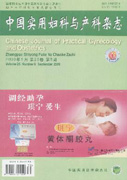Abstract:With the rapid development of molecular biology and its application in the field of reproduction, genetic counseling before PGD /PGS has become more and more complex. In this process,couples should be provided with evidence-based information on the techniques and their implications,as well as the Pros and cons of PGD. Of course, possible outcomes ,technical defects and security issues of PGD and PGS should also be informed. Meanwhile, the successful pregnant women after PGD / PGS should still do routine prenatal diagnosis, which is essential to the security of PGD/PGS.

